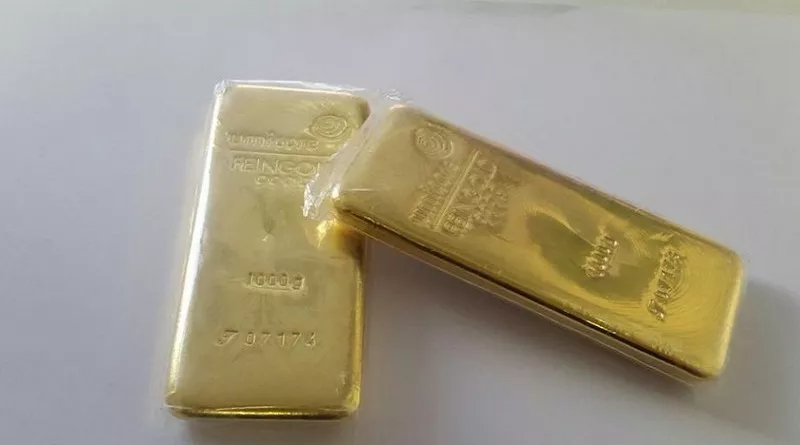In a display of remarkable economic resilience, the United States has reported its fastest-paced economic growth in almost two years during the third quarter of the fiscal year. This robust economic performance has defied previous concerns of an impending recession, which have lingered since 2022. These positive economic developments come alongside other noteworthy changes in financial markets.
The safe-haven demand for gold, bolstered by the ongoing Middle East conflict, has played a pivotal role in stabilizing bullion prices, countering the pressures exerted by a set of robust U.S. economic data that has substantially mitigated recession fears. As of 1:50 p.m. Eastern Time (1750 GMT), spot gold was up by 0.3%, reaching $1,986.39 per ounce. This price point nearly touched the five-month high recorded just last Friday. In the U.S., gold futures settled 0.1% higher at $1,997.4.
These promising economic indicators extend beyond the precious metals market. The latest report from the Labor Department reveals that the number of individuals filing new claims for state unemployment benefits during the week ending October 21st rose slightly to 210,000, compared to 200,000 in the previous week. These numbers are notably at the lower end of their range, spanning from 194,000 to 265,000 for this year.
Edward Moya, senior market analyst at OANDA, offered insight into these developments, stating that these data points “paint the picture of a very strong U.S. economy.” This narrative of economic strength, however, may necessitate further interest rate hikes by the Federal Reserve, which traditionally has a dampening effect on gold prices. Despite this, there hasn’t been a significant downward shift in gold prices, and Moya attributes this phenomenon to the persistence of geopolitical risks, particularly in the Middle East.
Another contributing factor is the 0.1% increase in the U.S. dollar’s value, which makes gold relatively more expensive for international buyers. This development has further influenced the dynamics in the gold market.
The recent surge in gold prices, with a 9% gain over the past two weeks, has been largely driven by investors seeking a safe haven amidst the Israel-Hamas conflict. Nevertheless, the looming possibility of higher interest rates has tempered any substantial gains in gold prices, which do not yield dividends or interest, unlike other investment options.
While the European Central Bank (ECB) has left interest rates unchanged, as widely expected, ending a record streak of ten consecutive hikes, the spotlight now shifts to the Personal Consumption Expenditures (PCE) price index, scheduled for release on Friday. The PCE data will offer crucial insights into what can be anticipated at the upcoming Federal Reserve policy meeting.
In the broader precious metals market, silver prices have dipped by 0.4% to $22.79 per ounce, while platinum remains steady at $902.74. Palladium, on the other hand, has experienced an 0.8% gain, reaching $1,134.86.
In conclusion, the U.S. economy’s robust performance in the third quarter, along with geopolitical uncertainties, has created a dynamic environment in the precious metals market, particularly for gold. The intersection of these economic indicators, international events, and Federal Reserve policy will likely continue to influence the future landscape of the market.


